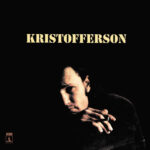The Grateful Dead’s “Fire on the Mountain” is more than just a catchy tune; it’s a resonant anthem that has captivated audiences for decades. As wildfires increasingly impact our world, including places of natural beauty like Yosemite, the song’s fiery imagery takes on a renewed and poignant significance. This exploration delves into the history, lyrics, and enduring appeal of “Fire on the Mountain,” uncovering why this song continues to ignite the hearts of listeners.
The Genesis of “Fire on the Mountain”
The story behind “Fire on the Mountain” is as intricate and fascinating as the song itself. Robert Hunter, the Grateful Dead’s primary lyricist, recounted in Box of Rain that the lyrics were born from “heated inspiration” at Mickey Hart’s ranch. As Hunter penned the words, the surrounding hills were ablaze, a literal fire on the mountain that mirrored the song’s evocative imagery.
However, the musical journey of “Fire on the Mountain” predates its Grateful Dead debut. Mickey Hart, the band’s percussionist, had been experimenting with the musical ideas for years. He recorded proto-rap versions of the song for his unreleased album Area Code 415 (1972-73) and a Mickey Hart album also titled Fire on the Mountain (1973-74). An instrumental version, titled “Happiness is Drumming,” even appeared on Hart’s 1976 album, Diga. It wasn’t until 1977 that “Fire on the Mountain” finally entered the Grateful Dead’s live repertoire, sung by Jerry Garcia. The lyrics evolved through various iterations before settling into the familiar version that graced their 1978 album Shakedown Street. This complex evolution highlights the collaborative and iterative nature of the Grateful Dead’s creative process.
Alt text: Yosemite Rim Fire aftermath, highlighting the real-world context and environmental themes associated with the “Fire on the Mountain song”.
The Iconic “Scarlet Fire” Pairing
“Fire on the Mountain” made its Grateful Dead debut on March 18, 1977, at Winterland Arena in San Francisco. Significantly, it was paired with “Scarlet Begonias,” creating the legendary “Scarlet Fire” combination. This pairing, often featuring extended improvisational jamming, became a cornerstone of Grateful Dead concerts. While “Fire on the Mountain” occasionally appeared independently, it was overwhelmingly linked to “Scarlet Begonias,” performed together in the vast majority of its 253 total performances, culminating on July 2, 1995. The “Scarlet Fire” sequence became synonymous with the Grateful Dead’s improvisational prowess and remains a beloved highlight for fans.
Lyrical Depth and Interpretations
Beyond its captivating rhythm, “Fire on the Mountain” is rich with lyrical layers that invite multiple interpretations. The line “There’s a dragon with matches that’s loose on the town…” immediately sets a scene of impending chaos and uncontrolled danger. Given Robert Hunter’s account of the lyrics being written amidst a real wildfire, the song can be seen as a direct commentary on the power and threat of fire. The lyrics resonate with contemporary concerns about climate change and increasingly frequent and intense wildfires, especially in regions like the American West.
However, the song’s meaning extends beyond literal fire. Drawing connections to the I Ching, hexagram #56, which represents “Fire on the Mountain” (or “The Traveler”), offers another layer of interpretation. This hexagram symbolizes journeys, both physical and spiritual, and the transient nature of life. The image of fire resting on the mountain can be seen as a metaphor for inner turmoil, passion, or even enlightenment set against a backdrop of stability and endurance. The song’s open-ended lyrics allow listeners to apply these themes to personal experiences, world events, or spiritual quests.
Alt text: I Ching Hexagram 56, visually representing “The Traveler” or “Fire on the Mountain” concept, linking ancient symbolism to the song’s deeper meanings.
Furthermore, the title “Fire on the Mountain” itself is a phrase with broader cultural roots, appearing in nursery rhymes, fiddle tunes, and even the title of an Edward Abbey book. This pre-existing cultural resonance adds to the song’s familiarity and impact, suggesting a collective unconscious awareness of the phrase’s inherent symbolism.
A Cautionary Tale with a Danceable Beat
Despite its potentially dire imagery, “Fire on the Mountain” is undeniably danceable. The song’s rhythmic structure, driven by Mickey Hart’s percussive influence, creates an infectious groove that encourages movement. Jerry Garcia’s guitar work, weaving in and out of the rhythm, further enhances this dynamic interplay. This juxtaposition of serious lyrical themes with an upbeat musicality is a hallmark of the Grateful Dead.
The song functions as a cautionary tale wrapped in an irresistible rhythm. Hunter’s lyrics can be interpreted as a warning – “how come we’re doing the same old same old when disaster is at hand?” – urging listeners to wake up and pay attention to the “fire” around them, whether literal or metaphorical. Yet, the music invites us to dance, to find joy and release even in the face of uncertainty. This duality is what makes “Fire on the Mountain” so compelling; it acknowledges the seriousness of the message while offering a pathway to engagement and even catharsis through music and dance.
Enduring Legacy
“Fire on the Mountain” remains a Grateful Dead staple and a fan favorite. Its enduring appeal lies in its multifaceted nature: its captivating musicality, its rich lyrical imagery, and its open-ended interpretations. Whether viewed as a commentary on environmental concerns, a spiritual metaphor, or simply a great song to dance to, “Fire on the Mountain” continues to ignite the imagination and inspire listeners, proving its timeless relevance. The song’s ability to resonate across generations solidifies its place as a true anthem in the Grateful Dead’s vast and celebrated songbook.

